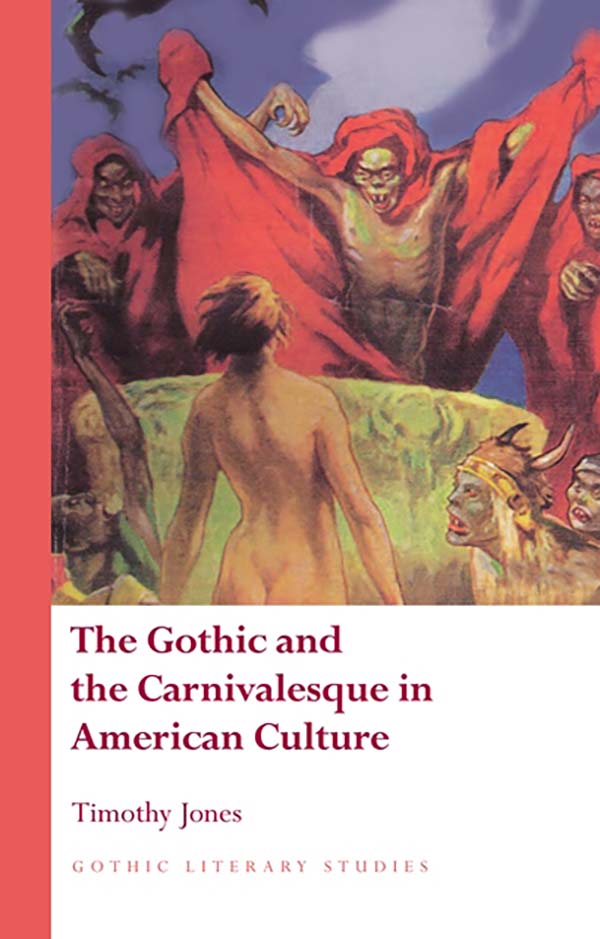The Gothic and the Carnivalesque in American Culture
Author(s) Timothy Jones
Language: English
Genre(s): Literary Criticism
Series: Gothic Literary Studies
- May 2015 · 288 pages ·216x138mm
- · Hardback - 9781783161928
- · eBook - pdf - 9781783162307
- · eBook - epub - 9781783162314
About The Book
Introduction: Ballyhoo
Chapter One: Theory, Practice and Gothic Carnival
Chapter Two: ‘The Delight of its Horror’ – Poe’s Carnivals and the Nineteenth-Century American Gothic
Chapter Three: Weird Tales and Pulp Subjunctivity
Chapter Four: Ray Bradbury and the October Aura
Chapter Five: Hosted Horrors of the 1950s and 1960s
Chapter Six: Stephen King, Affect and the Real Limits of Gothic Practice
Chapter Seven: Every Day is Halloween – Goth and the Gothic
Conclusion: Waiting for the Great Pumpkin
Endorsements
‘There is a lot of fun to be had in American Gothic and the Carnivalesque as its argument bounces convincingly from Poe and Hawthorne to King and Oates. It deftly negotiates comics and horror TV, happily juxtaposing Weird fiction and Bradbury, and enjoying the way Rice, Brite and Burton play Goth. While its playful readings explore the extensive intrageneric reflexiveness of Gothic forms, it also provides a serious reexamination of the genre's cultural and critical histories: throwing Bourdieu's habitus into the ring with Bakhtin's carnival, it produces a canny and witty mode of criticism informed by affect and practice.’
–Professor Fred Botting, Kingston University
Contents
Contents
Introduction: Ballyhoo
Chapter One: Theory, Practice and Gothic Carnival
Chapter Two: ‘The Delight of its Horror’ – Poe’s Carnivals and the Nineteenth-Century American Gothic
Chapter Three: Weird Tales and Pulp Subjunctivity
Chapter Four: Ray Bradbury and the October Aura
Chapter Five: Hosted Horrors of the 1950s and 1960s
Chapter Six: Stephen King, Affect and the Real Limits of Gothic Practice
Chapter Seven: Every Day is Halloween – Goth and the Gothic
Conclusion: Waiting for the Great Pumpkin


